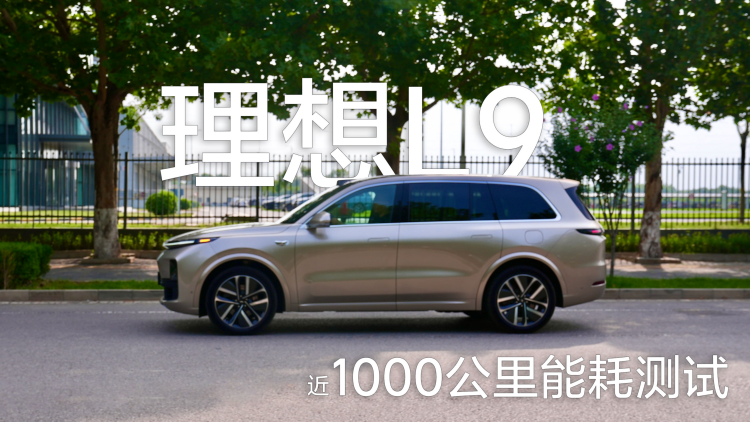Full-Size SUV with a Length of 5 Meters and Weight of 2.5 Tons – How Is Its Energy Efficiency in Daily Use Scenarios?
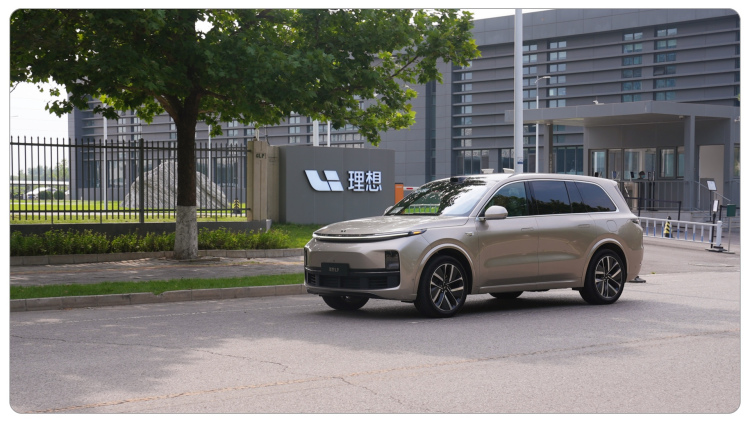
Today, I took an Ideal L9 SUV with a full battery and full tank of gas and drove from Beijing to Jinan, experiencing three different daily driving scenarios including heavy traffic, urban ring roads, and highways. This “long journey” is not to test the limits of the Ideal L9, but simply to give car enthusiasts a reference to its energy efficiency performance in real-world driving scenarios from the perspective of an owner.
Preparation for Testing
In this article, you will get answers to the following questions, with conclusions at the end of the article.
- How far can the Ideal L9 go with a full tank of gas and a full battery?
- How fuel-efficient is the Ideal L9 when driving at top speed on the highway?
- Which energy mode is the most fuel-efficient when driving on the highway?
- What is the power and NVH (noise, vibration, and harshness) performance of the Ideal L9 when the battery is only at 3%?
- How far can the Ideal L9 go after the fuel range is 0 kilometers?
- Approximately how much battery power is lost when parking with the air conditioning on for an hour?
Testing Environment
Weather: sunny during the day/rainy at night
Temperature: 30℃
Route: round trip from Beijing to Jinan
Total test distance: 900+ kilometers
Air conditioning: automatic mode 22℃ throughout
Personnel: 2 people, weighing 400 catties (200 kg) combined
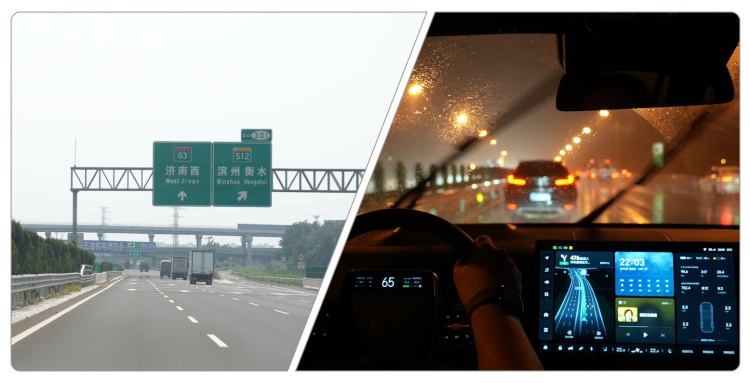
Testing Process
Phase One: From 100% to 80% battery level, driving solely on electricity in urban traffic conditions.
Phase Two: Starting at 80% battery level, switching to gasoline power on the highway (until 65 liters of gasoline are completely consumed, then automatically switches back to electric power)
Phase Three: From 80% to 3% battery level, driving on electricity in various driving conditions.
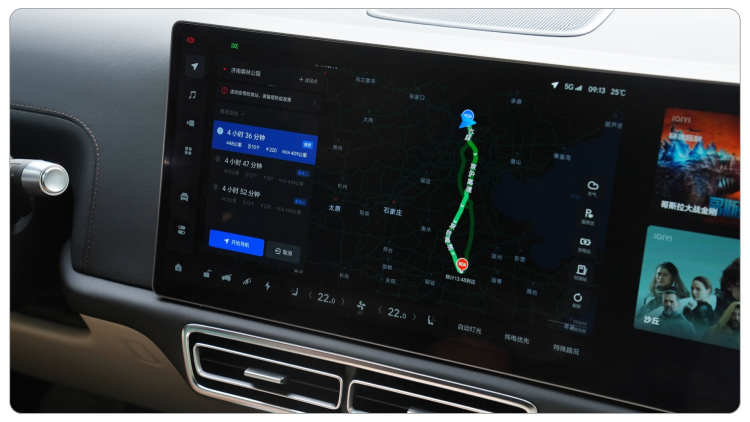
Starting from the Ideal Automobile R&D Headquarters in Beijing and arriving at Jinan Forest Park, we began our testing.
Phase One – Initial Pure Electric Energy Efficiency Experience
Pure Electric Energy Efficiency
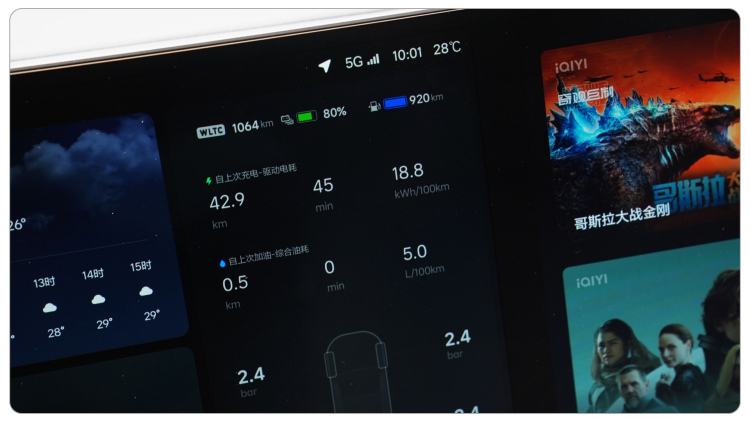
Detailed information: From 100% to 80% battery level, we drove a total of 43 kilometers, with an average speed of 57 kilometers per hour, and an electric power consumption of 18.8 degrees per 100 kilometers.
Road conditions: This segment includes half city roads and half ring roads, with only traffic lights and no traffic congestion, with good road conditions.## Driving Experience: City Driving of Ideal L9
Let’s briefly talk about the city driving experience of Ideal L9. Benefiting from relatively accurate steering, good suspension support, and a width of only 2 meters, driving in the city is not like driving a 5.2-meter large car, much more nimble than GLS and Toyota Land Cruiser I have driven before in the same class.
Stage 2 – Fuel Consumption Performance on the Whole Journey
Beijing to Jinan Section
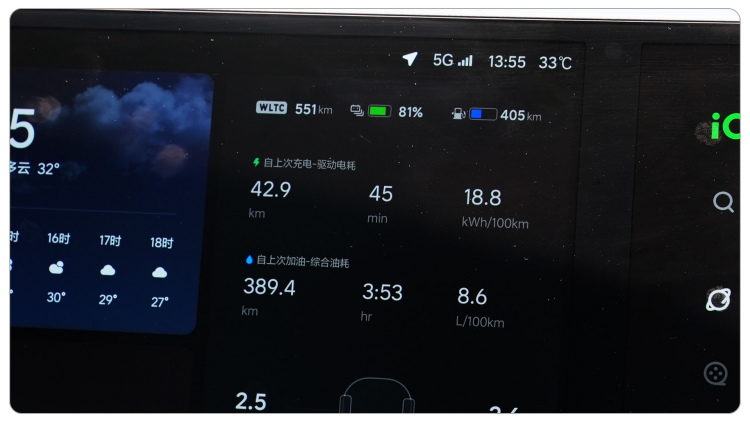
Detailed information: Start the range extender when the battery level reaches 80%. On the whole journey of high speed (from Beijing to Jinan on the Jinghu Expressway and then to Jingtai Expressway), the total mileage of the Beijing to Jinan section is 389 kilometers, the average speed is 100 kilometers per hour, and the fuel consumption is 8.6 liters per 100 kilometers.
Road Condition: The entire journey is on the expressway with heavy traffic in Hebei Province. The average speed of 100 kilometers per hour is possible thanks to the speed limit of 120 kilometers per hour.
Jinan to Beijing Section
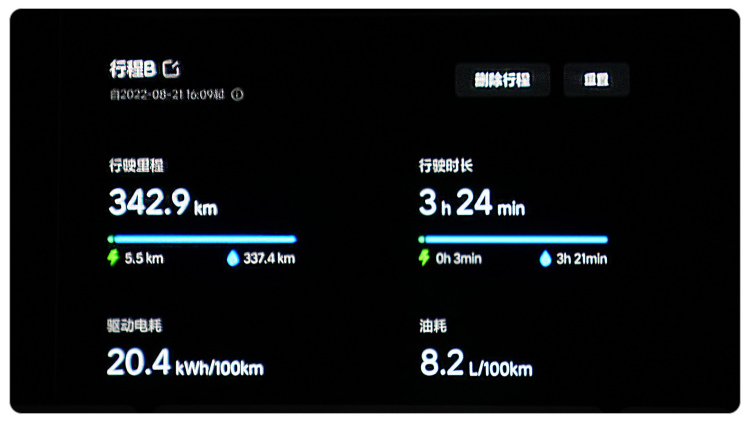
Detailed information: Keep the battery level at 80% throughout the section to ensure that all energy consumption of the vehicle comes from fuel. From Jinan to Beijing (from Jingtai Expressway to Jinghu Expressway, to the Beijing checkpoint), the total mileage of the section is 342 kilometers, the average speed is 100 kilometers per hour, and the fuel consumption is 8.2 liters per 100 kilometers.
Road Condition: This section is also on the expressway, with heavy traffic in Hebei Province. There was a minor traffic jam at the Hebei checkpoint. The average speed of 100 kilometers per hour is possible thanks to the speed limit of 120 kilometers per hour.
Driving Experience: High-speed Driving
The chassis is very solid during high-speed driving, there is no floating feeling when going through undulating roads, and the body can also be pulled by CDC during emergency lane change, with a very small amplitude of lateral swaying.
Fuel Consumption Summary
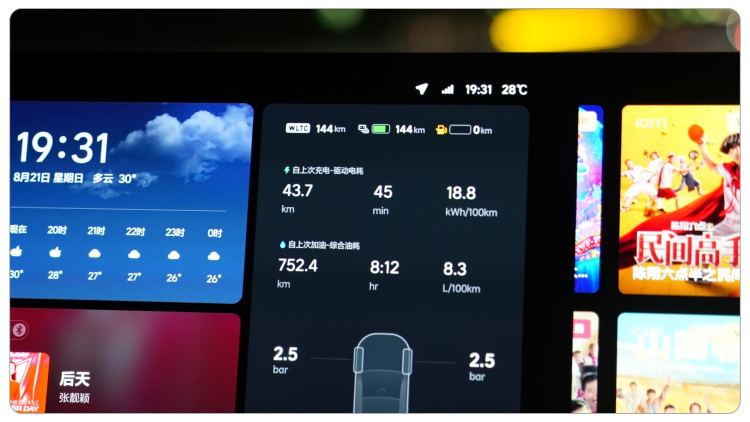
After arriving in Jinan, take a break and eat in the urban area, drove another 20 kilometers in the city before driving a total of 752 kilometers on a full charge of 80% of the battery. The fuel consumption is 8.3 liters per 100 kilometers. How do you feel about such high-speed fuel consumption performance for a full-size SUV?
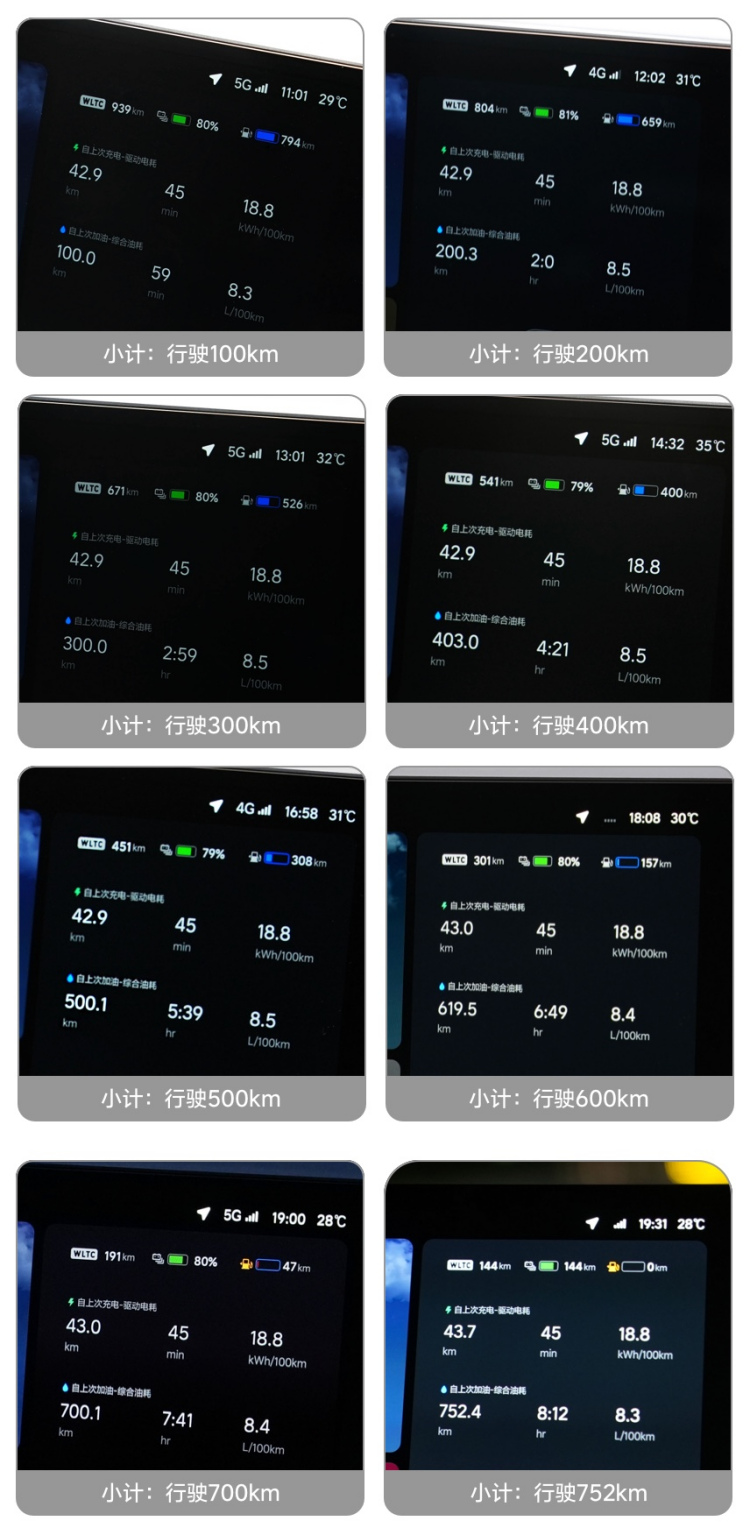
Stage 3 – A Rough Test of Pure Electric Range
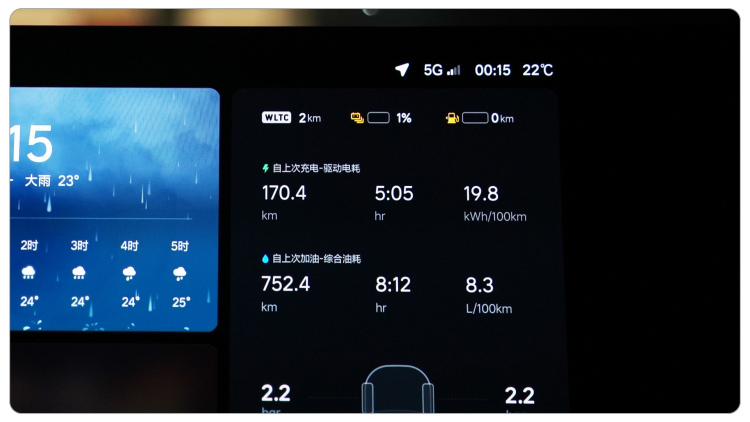 ## Test Conclusion of Energy Consumption
## Test Conclusion of Energy Consumption
The battery was used from 100% to 1% (including the first stage), covering a total distance of 170 kilometers at an average speed of 33 kilometers per hour. The power consumption was 19.8 kilowatt-hours per hundred kilometers.
Road Conditions: Just before the return trip entered the Beijing inspection station, the fuel tank was completely emptied, entering the pure electric mileage test phase. As a result, Beijing began to rain heavily at around 8 p.m., and the rainy-day tire adhesion decreased, which would cause an increase in energy consumption. The Beijing inspection station was blocked for nearly two hours, and the overall energy consumption level increased. Otherwise, there is still confidence to achieve the WLTC cycle mileage of 180 kilometers.
Conclusion of Power Consumption
The ideal L9 pure electric priority mode has a forced pure electric function, which can be used with the remaining 3% battery power. As a full-size SUV, the power consumption is below 20 kilowatt-hours, which is also good performance for urban use.
Test Conclusion of Energy Consumption
In this test, we did not slow down the speed, turned on the air conditioning throughout the journey, did not turn off the electric devices in the car, listened to music in the car, and watched movies in the rear seats, which completely performed the almost 1000 km journey in the way that car owners use it daily.
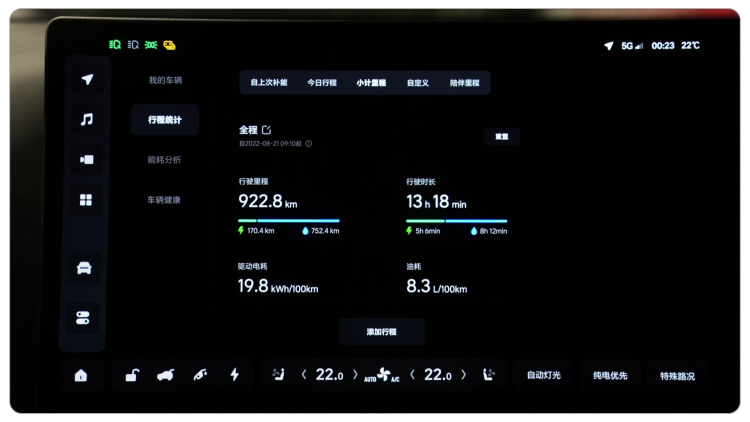
During the 13-hour process, I also deeply experienced the strength of the LI’s new self-developed extended-range electric platform, which completely surpassed the corresponding fuel vehicles in terms of power, smoothness, and energy consumption.
Technology is a process, and as users, what we care about is the result. We not only want low energy consumption, strong power, and high smoothness but also five-screen interaction, six large spaces, and flagship configurations like the in-car cold and warm refrigerator.
Therefore, in my opinion, the ideal L9 almost meets the needs of family users. Like that capricious saying, “I’ll give you everything you want.”
Don’t get caught up in the process, only the scenery at the end is the most beautiful.
Popular Questions and Answers
1. How many kilometers can the Ideal L9 travel with a full tank of fuel and a fully charged battery?
Answer: In the actual driving scenario test of the Ideal L9, with full fuel and a fully charged battery, the vehicle traveled a total of 922.8 kilometers. Among them, 731 kilometers were on the highway, the average speed was 100 kilometers per hour, and the fuel consumption was 8.3 liters.
2. Which energy mode is the most fuel-efficient for high-speed driving?
Answer: In this high-speed driving process, the hybrid mode and fuel priority mode were selected for alternate use. At 80% battery power, there was no difference in fuel consumption between the two modes, and both can maintain the battery level at around 80%.
3. What is the power and NVH of the Ideal L9 when the battery is at 3%?Answer:
I tried the gas pedal on the floor when the battery was at 1% and there was still a certain degree of acceleration from 0 to 30 kilometers per hour, which surprised me. The acceleration from 30 km/h onwards feels similar to that of a 2.5-liter naturally aspirated engine, so everyone does not need to worry about the power supply issue. Ideal L9’s battery uses new technology solutions specifically for the power supply scenario. Meanwhile, the range extender did not start to roar due to low battery power. Although the sound was slightly louder, it felt quite effortless. The range extender received a full five-star rating throughout the journey.
When the fuel range display shows 0 kilometers, we can still drive another 20 kilometers before switching to pure electric mode.
During our two-hour traffic jam, the remaining range displayed by WLTC dropped 10 kilometers. Therefore, running the air conditioner for an hour would reduce the battery charge by approximately 2% to 3%.
This article is a translation by ChatGPT of a Chinese report from 42HOW. If you have any questions about it, please email bd@42how.com.
